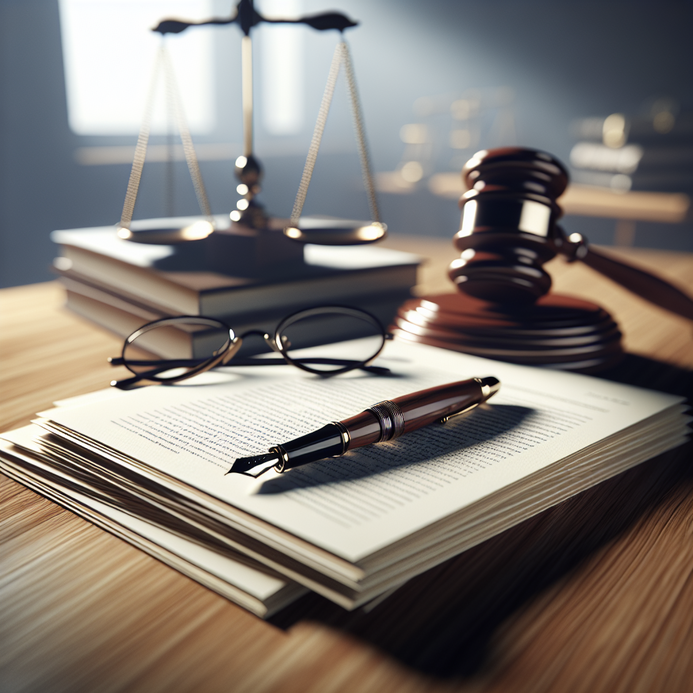Pleadings are essential documents exchanged during legal disputes, forming the cornerstone of civil litigation by presenting claims, defenses, or counterclaims. Their structure ensures clarity and precision in judicial processes. This article delves into definitions, classifications, procedural filing rules, and practical drafting considerations for pleadings. LegalExperts.AI enhances understanding by offering expert guidance for legal professionals and parties involved.
What Are Pleadings? An Overview
Pleadings are official documents filed by parties in a legal case to outline their claims, defenses, and related arguments. They provide the court and opposing parties with a clear outline of contested issues, thereby shaping the litigation process.
What is the definition of pleadings in law?
In law, pleadings are written submissions detailing the nature of the dispute, the claims and defenses raised, and the relief or remedy sought by the parties involved.
What does a pleading typically include?
A standard pleading contains essential components like identification of the parties, statement of facts, legal reasoning, and the relief sought. These elements ensure pleadings comply with procedural mandates.
What is the connection between pleadings and legal writing?
Legal pleadings require careful drafting. Adherence to procedural rules and accuracy in legal writing ensures that a pleading meets legal standards while effectively presenting the party’s position.
Types of Pleadings in Law
There are various types of pleadings in civil litigation. Each document serves a unique purpose, aligning with the party’s procedural goals during the case.
What are the main types of pleadings?
- Complaint: Initiated by the plaintiff, it establishes the basis of the lawsuit by outlining claims and requested relief.
- Answer: The defendant’s reply to the complaint, addressing allegations and providing defenses.
- Counterclaim: Filed by the defendant to assert claims against the plaintiff, often related to the same circumstances.
- Cross-complaint: Relevant in complex litigation, this occurs when one defendant files a complaint against another party also involved in the lawsuit.
What are affirmative defenses?
An affirmative defense introduces new facts or legal arguments that, if proven, negate liability for unlawful conduct. Examples include self-defense, consent, or time-barred claims like statutes of limitations.
How are pleadings governed by the Federal Rules of Civil Procedure?
Pleadings in U.S. federal courts follow the Federal Rules of Civil Procedure. Rule 8 requires pleadings to be concise, direct, and clear while permitting alternative or inconsistent claims when necessary to promote fairness.
The Importance of Pleadings in Legal Proceedings
Pleadings play a foundational role by setting the boundaries of the case. They guide the actions of both the court and attorneys, ensuring orderly progression.
Why are pleadings important in civil cases?
In civil litigation, pleadings are critical for:
- Providing formal notice of claims and defenses.
- Ensuring clarity and focus of legal issues.
- Facilitating judicial efficiency by defining the scope of disputes.
How do pleadings affect legal strategy?
Pleadings shape facts and arguments for litigation. Attorneys often identify strengths, potential negotiation points, or procedural advantages from well-drafted pleadings.
What happens after pleadings are filed?
Once pleadings are exchanged, the litigation advances to stages such as motions to dismiss or discovery. These phases refine the claims and provide evidence for resolution, either by settlement or trial.
Practical Guidance on Filing and Amending Pleadings
Complying with procedural rules for filing pleadings ensures smooth litigation processes. Jurisdictions, however, vary in their rules.
How are pleadings filed in court?
Pleadings must align with court guidelines. Most jurisdictions require electronic submissions through platforms like PACER in U.S. federal courts or similar systems internationally.
What are jurisdiction-specific differences in filing?
Distinct procedural rules govern pleading timelines or additional format requirements in jurisdictions like Canada or England and Wales. Local counsel ensures compliance.
Can pleadings be amended after filing?
Amendments are possible with court approval, enabling attorneys to address errors or include new information arising during litigation.
Best practices for filing pleadings
To ensure accuracy:
- Verify compliance with jurisdictional filing rules.
- Maintain clarity in content to avoid judicial queries.
- Proofread for procedural accuracy to prevent rejection.
Common Errors in Pleadings and How to Avoid Them
Mistakes in pleadings can delay or compromise litigation. Avoiding these errors contributes to efficient practices.
What are the most frequent mistakes in pleadings?
- Failing to follow prescribed formatting or timelines.
- Excess use of legalese, leading to lack of clarity.
- Omitting critical facts or legal assertions necessary for the case.
Tips for drafting effective pleadings
- Write in clear, concise, and accessible language.
- Avoid errors through thorough review of legal geography, like Rule 8 adherence.
- Seek peer feedback to identify overlooked omissions.
Checklist for avoiding common pleading errors
- Prepare drafts outlining major arguments and facts.
- Use consistent language to align submissions.
- Retain jurisdictionally aligned legal professionals.
Other Resources and Further Reading on Pleadings
Expanding understanding of pleadings through tools or legal guides aids litigants.
- PACER & Digital Filing Tools: These simplify U.S. federal e-submissions.
- Expert Resources for Written Pleadings: Practitioners find draft templates, amended form illustrations, typology statistics in resources from legal-literacies initiatives.
LegalExperts.AI provides reliable solutions.



